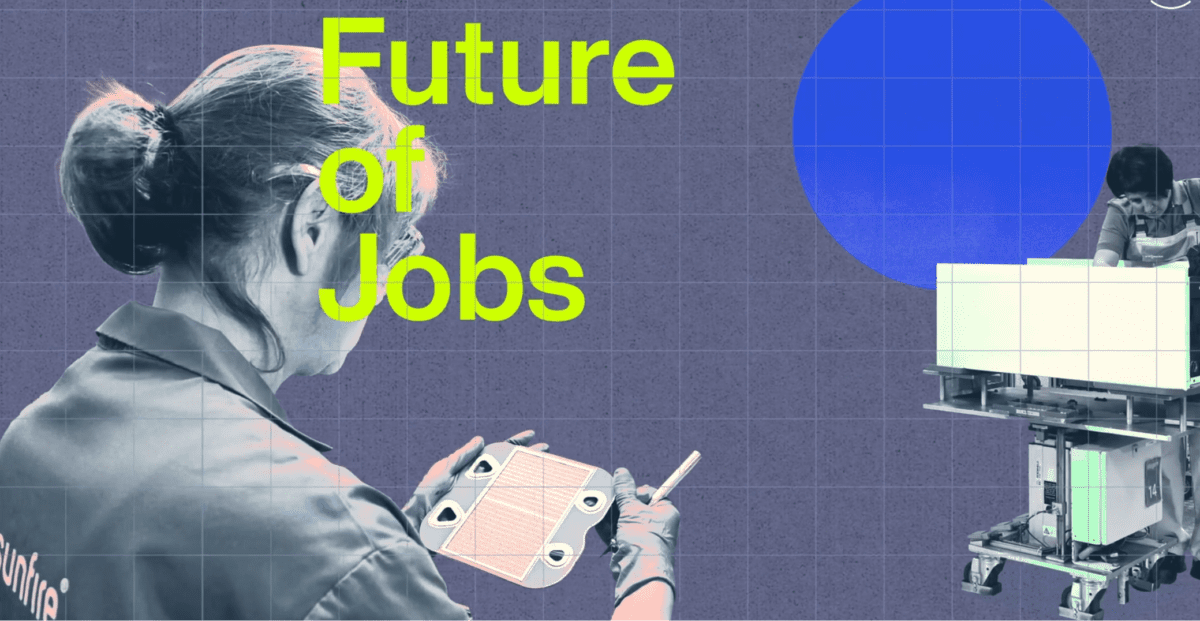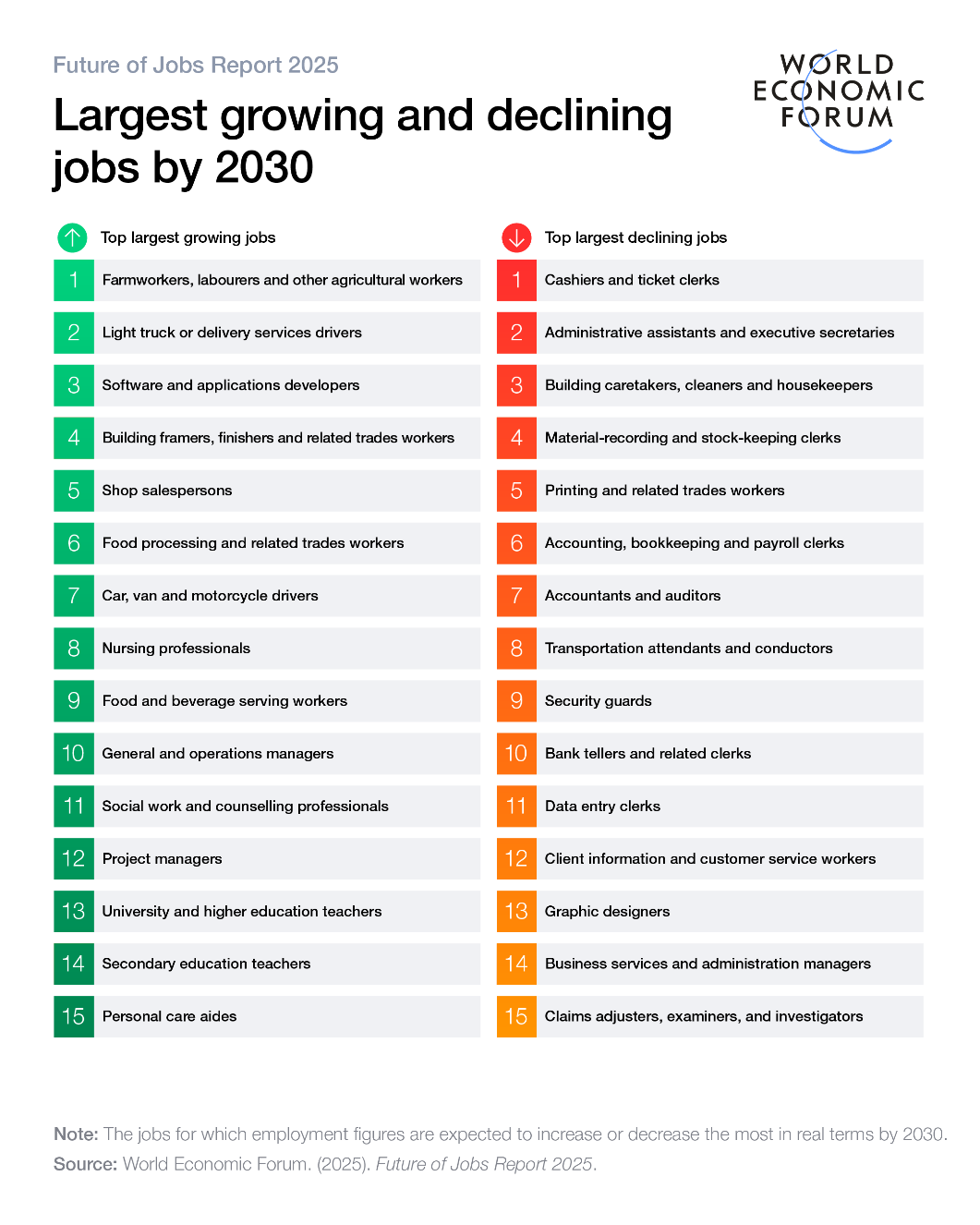Agriculture Professions Top the List of Largest Growing Jobs – World Economic Forum’s 2025 Report

The World Economic Forum’s (WEF) Future of Jobs Report, a bi-annual study, has become a key resource for understanding the evolving global labor market. The 2025 edition offers a detailed look at the trends and challenges that will shape the next five years, drawing on a survey of over 1,000 employers representing more than 14 million workers across 55 economies and 22 industry clusters. This year’s report emphasizes the interconnectedness of various factors, from technological advancements to economic and geopolitical shifts, and their combined impact on the job landscape.
Key Macrotrends Reshaping the Labor Market
The report identifies five major macrotrends that are significantly impacting the labor market:
- Technological Change: This includes the expansion of digital access, advancements in artificial intelligence (AI) and information processing, and increased use of robotics and automation. Broadening digital access is seen as the most transformative trend, with 60% of employers expecting it to significantly change their businesses by 2030.
- The Green Transition: Increased efforts to reduce carbon emissions and adapt to climate change are driving changes across industries.
- Geoeconomic Fragmentation: Geopolitical tensions and increased restrictions on trade and investment are impacting business models.
- Economic Uncertainty: The rising cost of living and slower economic growth are creating significant challenges for employers and workers.
- Demographic Shifts: Aging populations and variations in working-age populations are also impacting labor markets.
Impact on Jobs: Growth and Decline
The interplay of these macrotrends is expected to result in a “structural labor market churn” of 22% of jobs, with 170 million new jobs created and 92 million displaced by 2030. While this represents a net increase of 78 million jobs, the changes will not be evenly distributed. Technological change is predicted to be the most divergent force, both creating and displacing jobs.

Skills in Demand to Adapt to a Changing Landscape
The skills required by workers are also evolving rapidly. The report highlights the following as key skills for the future:
- Analytical thinking remains a core skill for employers.
- Resilience, flexibility, and agility are seen as essential.
- Technological literacy, AI and big data, and networks and cybersecurity are among the fastest-growing skills.
- Creative thinking, and curiosity and lifelong learning are also gaining in importance.
- Human-centered skills are still crucial, as many jobs require complex problem-solving, nuanced understanding and sensory processing that are difficult for AI to replicate.
A Closer Look at the Agricultural Sector
The agriculture, forestry, and fishing industry faces a unique set of challenges and opportunities within this changing landscape. The sector is heavily influenced by:
- Climate change and the need for climate mitigation and adaptation.
- The rising cost of living.
- While important, digitalization is less of a driver in agriculture than in other sectors. For example, only 70% of employers in the agricultural sector expect an increase in AI and big data use.
Despite the slow adoption of some advanced technologies, the agriculture sector is expected to see significant job growth, with farmworkers predicted to see the largest absolute growth of any job type, an estimated 35 million new jobs by 2030. This growth is driven by the green transition, broadening digital access, and rising costs.

Skills gaps are a primary barrier to transformation for this industry, as is an outdated regulatory framework. The sector also faces challenges in attracting new talent, and needs to address insufficient data infrastructure.
Key skills for workers in this sector include:
- Resilience, flexibility, and agility.
- Technological literacy.
- Environmental stewardship.
The sector is expected to rely more on human labor than some other industries, with 43% of work tasks delivered by humans.
To address the challenges the industry is planning to utilize workforce strategies such as:
- Upskilling and reskilling the workforce.
- Augmenting their workforce with technology.
- Hiring for emerging skills.
Regional Variations
The report also highlights regional variations, as the impact of these trends will vary by geography. For example:
- Companies in Eastern Asia and Oceania anticipate labor market transformations due to aging and declining working-age populations, and slower economic growth.
Navigating the Future of Work
The Future of Jobs Report 2025 emphasizes the need for proactive and collaborative efforts to navigate the complexities of the evolving labor market. It is critical for businesses, governments, and workers to:
- Focus on skills development and continuous learning.
- Embrace technological advancements and their potential to augment human capabilities.
- Adopt more flexible hiring practices to address shortages.
- Improve diversity, equity, and inclusion to broaden the talent pool.
- Support employee health and well-being.
- Invest in infrastructure.
- Adapt to a more dynamic, and fluid global economy.
Initiatives like the Reskilling Revolution and the Jobs Initiative are aimed at creating a more inclusive and future-ready workforce. The choices made today will determine the future of work and the opportunities it provides for everyone.



